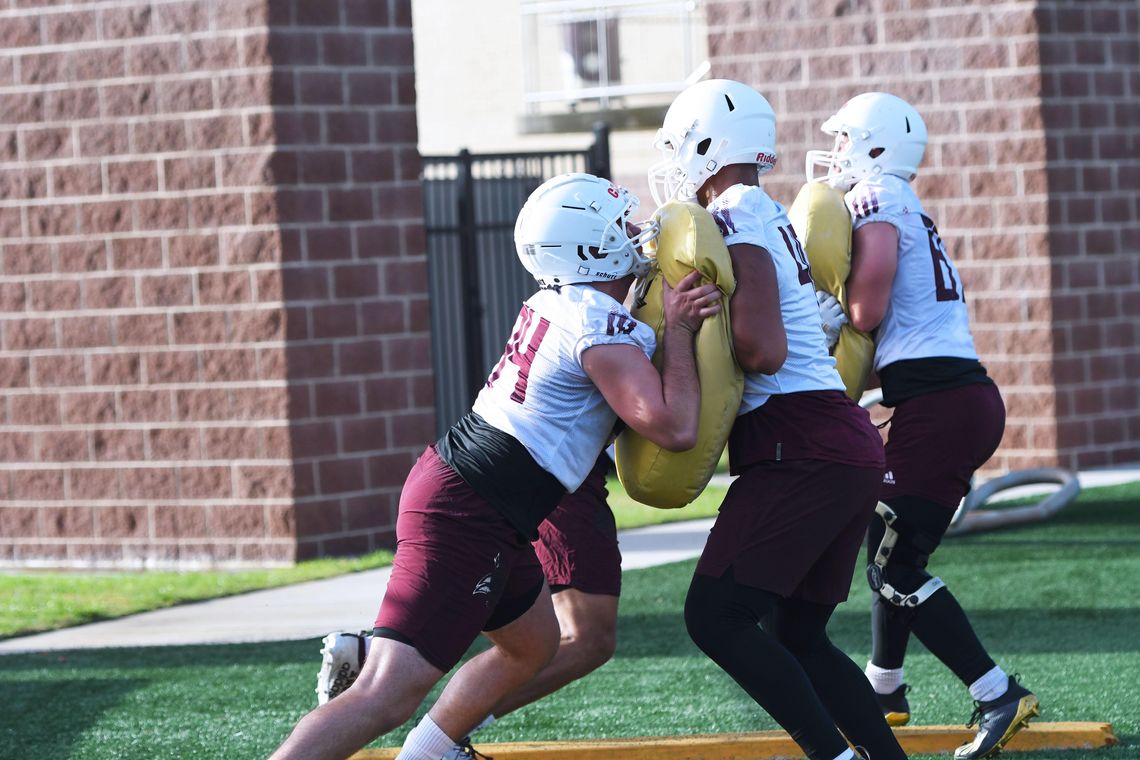It’s the worst-kept secret of spring camp. Texas State head coach Jake Spavital wants to use his tight ends.
He was barely able to in 2020. Sophomores Micah Hilts and Tyler Huff each suffered season-ending injuries — Hilts a torn pectoral mucle and Huff a torn ACL — before the schedule even began, neither taking a snap last year. Other injuries, combined with COVID-19 protocols, thinned out the remainder of the position group through extended stretches of the year. In the team’s season opener against SMU on Sept. 5, Spavital said there were literally none available to put on the field.
Redshirt sophomore Jackson Lanam provided some stability to the position when he returned the next week. Lanam played in the next seven games and posted a breakout performance against South Alabama on Oct. 17, reeling in five passes for 48 yards and a touchdown. But two weeks later, the Corpus Christi native went down with a season-ending injury on the third drive of the first quarter, leaving the tight end cupboard bare again throughout the final four games of the year.









